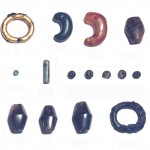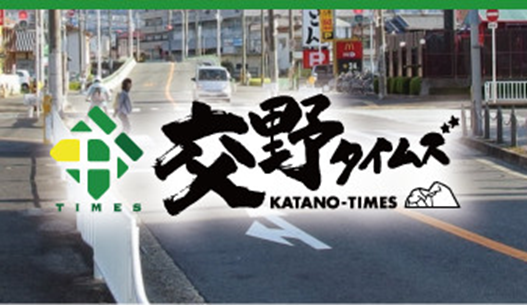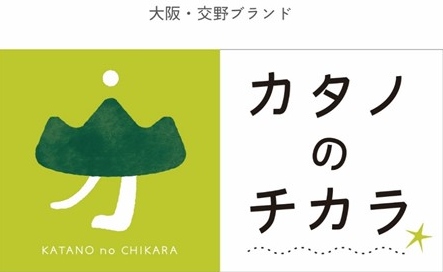Chapter 2 Katano from the Kofun period to the Asuka-Nara period
After the Yayoi period, the primitive accumulation began and power holders, who controlled some communities, emerged. They are called ‘Gozoku‘ in Japanese. ‘Gozoku‘ made big burial mounds -‘Kofun‘- for displaying their mights.
Many burial mounds made in the end of 3rd century were found in the Mori area of Katano City. At the time, Katano was controlled by Katano Mononobe, who was a Mononobe’s relative. Mononobe was one of leading Gozoku and had its political base around Isonokami Jingu (Isonokami Shrine) of Nara. The burial mounds in the Mori area were allegedly Katano Mononobe’s.
Accessories, mirrors, farm equipments, Katanas, swords, armors, and Haniwa were excavated from the Katano Higashi Kurumaduka Kofun, which was made in the beginning of 5th century. Gozoku varied these goods with coffins in order to show off their political power. Haniwa was unglazed clay figures made for warding off evil spirits.
accessories found from Kuraji Kofun Gun
In the middle of 5th century, Toraijin, who came from China and Korea, brought, to Japan, advanced skills to make steel goods, pottery, and textiles. It is said that Katano Mononobe invited Toraijin to Katano, and attempted to produce high-quality steels. In fact, many tools for making steels were found from the Mori Iseki.
After the fall of Katano Mononobe in the end of 6th century, emperors dominated the Mononobe’s areas including Katano. It became vested in emperesses. In Japanese, an ’empress’ is pronounced ‘Kisaki’. Hence, it is said that several Katano’s area names, ‘Kisaichi’ and ‘Kisabe’, are deeply relating to ‘Kisaki’.
Go on to Chapter3 Katano in the Heian period


